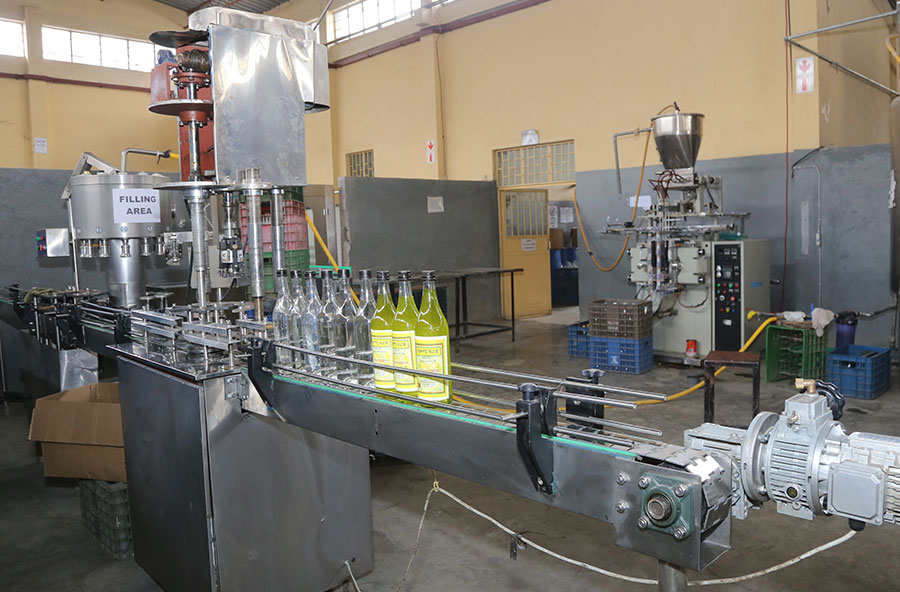
News Analysis | Aug 07,2021
Feb 9 , 2019
By FASIKA TADESSE ( FORTUNE STAFF WRITER )
Headline inflation, which has been easing for the past two months, sped up last month to reach 10.9pc, according to the latest report from the Central Statistical Agency (CSA).
Last month's report is the second after the Agency revised the basis for its inflation rate measurements, the Consumer Price Index (CPI) that quantifies the price of a basket of goods and services. The revision of the basis was made eight years after the last update.
January's headline inflation, a measurement of the cost of living, has shown growth for the second consecutive month. Last December, the inflation rate stood at 10.4pc, registering a 1.1 percentage point increase from the preceding year.
The CPI revision, which was made recently with the primary aim of replacing the old and outdated base year, has led to the revision of the inflation rate over the past 24 months. The current base year is set for 2016 and was selected to reflect more diversified and up-to-date data and includes additional goods that were excluded in prior year measurements, according to the Agency.
The double-digit rate was recorded last month, against the Agency's target of nine percent inflationary pressure in the reported time. The current Meherharvest season, when the supply of food items is high, was mentioned as a reason for the drop.
However, the latest CPI measurement of the average change in the price consumers pay, shows that non-food inflation in the stated period reached 10.2pc, while food inflation registered at 11.4pc, a respective 0.1 and 1.1 percentage point increase compared to the previous month.
“Last month, all cereal prices consistently rose in Addis Abeba, while teffprice rose in all regions,” reads the report from the Agency. “Meat, milk, cheese and eggs, butter and spices prices have shown an increase.”
Nonetheless, the prices of wheat, rice, sorghum and durra showed a slight decline in most regions, adds the report, which also reveals that the prices of vegetables have stabilised in all regions compared to the previous month.
The non-food inflation rate was pushed up by the rise in prices of footwear and clothing, housing repair and maintenance, energy, household goods, furnishings, transport, health care and food and drinks consumed away from home, the report indicates.
While the inflationary pressure in Ethiopia has risen, neighbouring Kenya managed to keep the figure down in the single digits. Kenya's inflation rate in January was 4.7pc, dipping by one percentage point from the previous month, according to tradingeconomics.com, a New York-based statistics and data provider.
For the past 15 years, the average inflation rate of the country was 14pc, according to Prime Minister Abiy Ahmed (PhD), who addressed parliament two weeks ago.
"We have targeted to govern the inflation rate and keep the figure in single digits by cutting government expenditures and investments on mega projects," he said.
The economy may show improvements, according to Atlaw Alemu (PhD), a lecturer at Addis Abeba University, but it is hard to say it is cured as the symptoms of unhealthiness are already there.
"Double-digit inflation, a higher unemployment rate, a severe forex crunch are all there in the economy," commented Atlaw.
PUBLISHED ON
Feb 09,2019 [ VOL
19 , NO
980]

News Analysis | Aug 07,2021

Commentaries | Sep 27,2025

Featured | Jan 01,2022

Commentaries | Jul 17,2022

View From Arada | Nov 19,2022

Digital First | Mar 17,2020

Fortune News | Jul 18,2020

Fortune News | Dec 05,2018

Advertorials | Sep 05,2025

Editorial | Dec 26,2020

Dec 22 , 2024 . By TIZITA SHEWAFERAW
Charged with transforming colossal state-owned enterprises into modern and competitiv...

Aug 18 , 2024 . By AKSAH ITALO
Although predictable Yonas Zerihun's job in the ride-hailing service is not immune to...

Jul 28 , 2024 . By TIZITA SHEWAFERAW
Unhabitual, perhaps too many, Samuel Gebreyohannes, 38, used to occasionally enjoy a couple of beers at breakfast. However, he recently swit...

Jul 13 , 2024 . By AKSAH ITALO
Investors who rely on tractors, trucks, and field vehicles for commuting, transporting commodities, and f...

Nov 1 , 2025
The National Bank of Ethiopia (NBE) issued a statement two weeks ago that appeared to...

Oct 25 , 2025
The regulatory machinery is on overdrive. In only two years, no fewer than 35 new pro...

Oct 18 , 2025
The political establishment, notably the ruling party and its top brass, has become p...

Oct 11 , 2025
Ladislas Farago, a roving Associated Press (AP) correspondent, arrived in Ethiopia in...